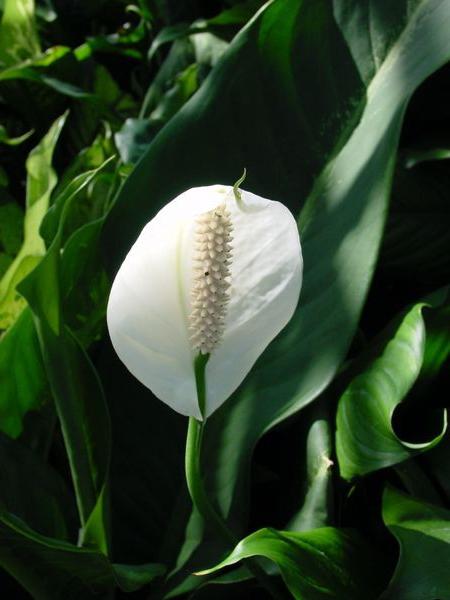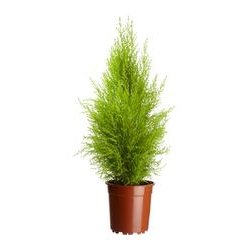Flowers called "female happiness" are rather unpretentious domestic plants. In the wild, they grow in the tropics - in the moist forests of Polynesia, Venezuela, Colombia and Brazil.

Another, scientific name for these evergreensperennials belonging to the family Aroids - spathiphyllum. You can find them by large, saturated green or dark emerald leaves lanceolate. The stalk of spathiphyllums is absent, but they bloom with beautiful white flowers, reminiscent of the shape of the cobs, framed by a "veil". In this article we will talk about how flowers are grown at home in the "female happiness". Care for them is really not complicated at all. The main thing is to observe several agrotechnical rules and create the most favorable conditions, close to natural ones.
Flowers "female happiness": care and temperature characteristics of cultivation

Spathiphyllum is a tropical plant,preferring a moist, mild and warm climate. Therefore, for its growth and development, it is necessary to maintain a comfortable room temperature - within 18 ° C - 24 ° C. In winter, a slight drop in temperature to 16 ° C is possible. Cold and drafts can seriously undermine the health of the plant and even destroy it. If the temperature in the room constantly drops below 15 ° C, "female happiness" can fall ill, stop growing and eventually die. Spathiphyllum is afraid of drafts, so it is undesirable to expose it to jets of cool air when the room is ventilated. It is also not recommended to take a pot of plant on the balcony or terrace in spring and summer. From this plant will not get stronger and healthier, but can wither indeed.
Home flowers "female happiness": care and maintenance of humidity
Spathiphyllum loves not only warmth, but also highhumidity (60% or more). Therefore, it is recommended to maintain it at a high level in many ways. First, it is advisable to purchase a household humidifier and use it in a room where "women's happiness" is grown. Secondly, the leaves of the plant should be regularly sprayed from the spray gun with warm, soft and necessarily water. If you notice that there are stains on the leaves of the spathiphyllum - be aware that the water you are using is not suitable because it is tough enough. Also, periodically the leaves of the plant should be wiped with a damp cloth, to clean them from dust and dirt. In addition to temperature and humidity, it is necessary to follow the lighting in the room. Spathiphyllum blossoms blossom in the event that he will miss the light. Therefore, it is advisable to choose a window sill or a place near the southern window where there is a lot of soft diffused light. On the other hand, as if this flower did not like light, it should be protected from the scorching rays of the midday sun. Otherwise, the leaves of the plant can get burned. So, caring for flowers "female happiness" is to create favorable conditions for their growth, namely - maintaining a warm temperature and high humidity. Do not forget about the light - of course, spathiphyllum will adapt to the penumbra, but it is more comfortable for him to grow in a well-lit place.
Flowers "women's happiness." Care for them at home

That the plant is magnificent and long blossomed,you must set the correct watering mode. Spathiphyllum loves water, so do not allow the earthen coma to dry out in the pot. In general, watering the flower should be abundant and regular. To moisten the substrate, you need to use only unstable, soft and non-cold water. If you notice that the leaves of the plant have dropped, turned yellow and began to fall off - it means that the flower is experiencing a serious fluid deficit. On the other hand, do not over-fill the plant, otherwise its roots can be rotten. Determine the excess moisture can be by the same sign as the blackening of the leaves. Between watering the upper layer of the earth should be able to dry out. In winter, the plant will be moistened less often than in the summer. Annually, in early spring, the plant is transplanted into a new pot with a good substrate. At the bottom of the tank is necessarily laid drainage (pebbles, expanded clay). If necessary, during the transplantation, the overgrown shrub can be divided into parts and planted by new pots.











